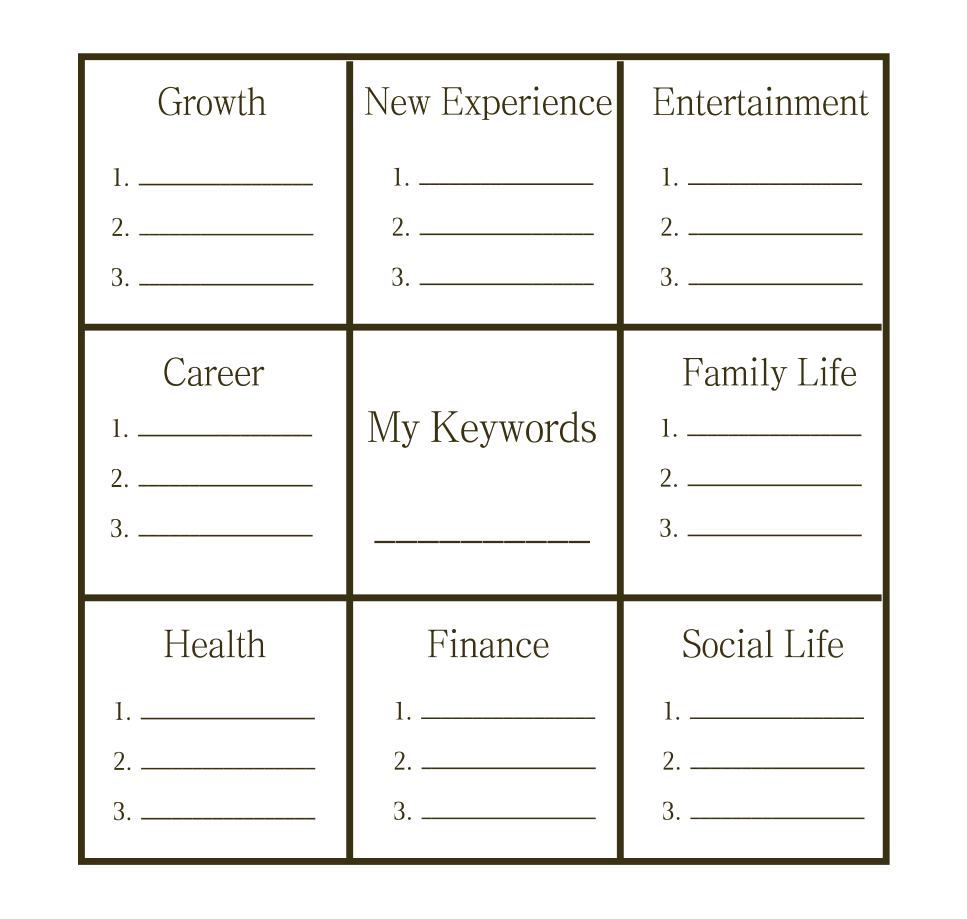🎯 How to find your goal
Before we begin, let’s distinguish between four related concepts: dreams, ideals, visions, and goals.
These terms move from abstract to concrete, from distant to actionable. Understanding the difference is crucial when searching for your goals.
As children, we often had “dreams,” but as we grew older, we realized most dreams were unrealistic. We then developed “ideals,” which were more grounded but often collapsed under the weight of reality.
Later, we began to form a “vision.” A vision is rooted in reality—it reflects our aspirations after engaging with the real world. It is achievable, and that is why we are willing to work toward it.
Finally, a goal is the concrete and detailed expression of a vision, making it actionable.
🔍 Finding your vision
To find the right direction, we must first imagine our vision—essentially asking: “What do I truly want?”
The answer is deeply personal and tied to your values. There is no right or wrong, only what fits you.
A simple guiding question is: “What kind of life do I want in the future?”
This future could be near or far away, but a common time frame is five years. A vision does not need to be overly specific; it only needs to form a clear picture in your mind. For more detail, you can examine different areas of life, for example using the “Life 9-Box Grid.”
Method: The life 9-box grid
The Life 9-Box Grid divides life into nine domains: learning & growth, exploration & experience, leisure, career, family, health, finance, community & relationships, plus one guiding keyword for your current life stage. The keyword represents your overall five-year vision, while each domain refines it further.

Find a quiet, comfortable place where you won’t be disturbed. Write a letter to yourself five years in the future, and answer questions like:
- How old am I?
- Where do I live?
- What kind of home do I live in?
- Who am I with?
- What am I doing each day?
- How do I feel?
- …
When answering, imagine there are no limits of time or money. Write vividly and create a mental picture. This becomes your ideal vision for five years from now.
For example, if you imagine yourself as a product director at a mid-sized tech company, that is your five-year vision for career development.
Once your vision is clear, the next step is to transform it into actionable goals.
🪜 Turning vision into goals
A vision points the way, but to take action we must translate vision into goals.
Visions often look five years ahead, while goals should be framed within one year or less. This requires identifying the path that connects the two.
Take the vision of “becoming a product director at a mid-sized tech company.”
First, study the role’s responsibilities and competencies. For example:
- Strong business acumen to drive product line profitability
- Experience building projects from 0 to 1
- At least three years of team management experience
Next, assess your current situation:
Do you have experience building new projects from scratch?
Have you led a team?
Have you managed successful product monetization?
If gaps exist, you need to seek opportunities to build those experiences—perhaps even change jobs. Corresponding goals could include:
- Join a new project from the ground up
- Become a team lead
- Drive your product line to generate $100,000 in profit this year
- Study the business models of 50 companies
These goals cannot all be pursued at once, so prioritization is essential. For instance, “studying 50 companies” can start immediately, while “product line profitability” can be planned for the near term. “Leading a team” or “building a project from scratch” may depend on timing, and can be recorded in GoalMap until the right opportunity comes.
This is the general process of transforming vision into goals.
Once you know what you aspire to, your actions gain clarity and direction instead of being driven by impulse.
To learn more about how to set good goals and how to break them down, read: 6 Steps of Goal Management.
Reference
[1] Getting Things Done, David Allen